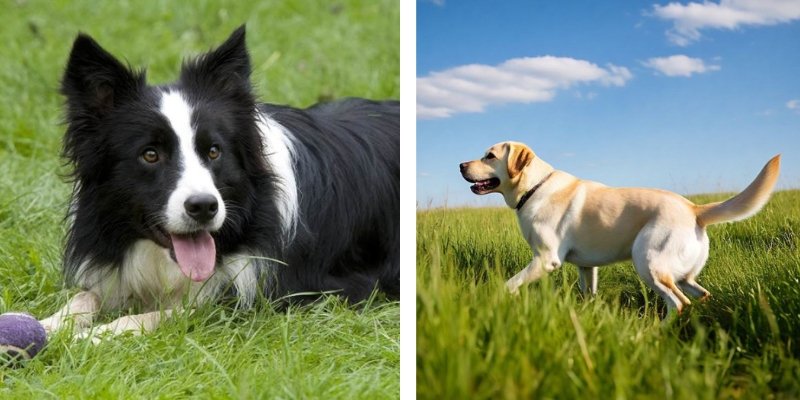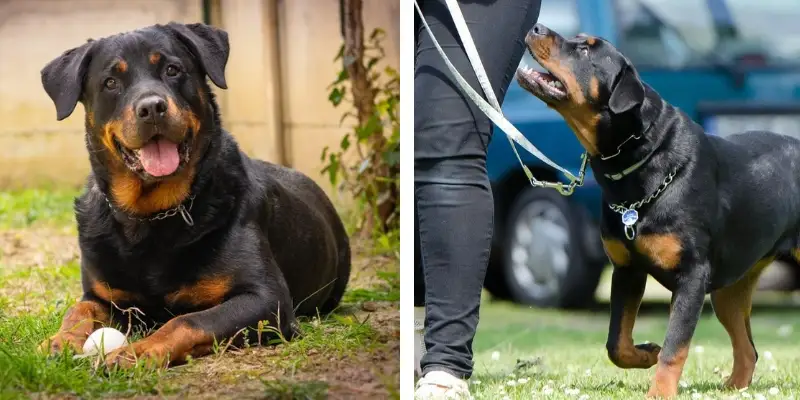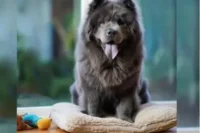Discover the Simple Steps to Teach Your Dog Calm Greetings – It’s Easier Than You Think!
Published: 01 Jan 2025
Picture this: You’re out on a walk, and your dog suddenly starts barking, pulling, or even growling at another dog. It’s not only stressful for your dog but also embarrassing for you as an owner. So, it becomes a high-value question for pet owners: how to teach dog to greet other dogs calmly? No one likes the feeling of trying to calm down a dog who’s acting out, especially when it causes discomfort to other dog owners.
In this article, we’ll go over simple steps you can take to help your dog stay calm and collected during dog-to-dog greetings.

Understanding Dog Behavior
Before we start training, it’s important to understand why your dog might act out when meeting other dogs. Some dogs get overly excited or even reactive because they’re unsure or just too curious about the other dog.
Why Do Dogs Get Excited or Reactive?
Dogs are naturally curious animals. When they see another dog, their first instinct is to check them out. If they haven’t been around other dogs much, this can make them nervous or overly excited.
The Role of Body Language
Dogs communicate through their body language. When they meet a new dog, they might wag their tail, stiffen up, or even growl. These signs show that they’re either excited or unsure of the other dog.
Recognizing Stress or Excitement in Your Dog
Watch for signs like panting, raised hackles, or a tense body. These could mean your dog is stressed or too excited. The sooner you spot these signs, the better you can help your dog stay calm.
Steps to Teach Dog for Calm Greetings

Let’s break down the steps to teach your dog to greet other dogs calmly. It’s all about creating positive experiences and keeping control.
Start with Socialization
Socializing your dog early helps them get used to being around other dogs. Start with calm, friendly dogs in a safe space like a yard or quiet park. Gradually introduce them to more dogs as they get comfortable.
Training with Positive Reinforcement
Reward your dog when they stay calm. Use treats or praise right after a good greeting. This teaches your dog that calm behavior brings rewards, helping them stay calm next time.
Practice Leash Training
Leash training is key to keeping control. When your dog gets excited, gently guide them back to a calm state with commands like “easy” or “calm.” This helps them focus on you instead of the other dog.
Teach the “Sit” Command
Asking your dog to sit before greeting can help them stay calm. It gives them something to focus on and prevents jumping or pulling. A simple “sit” can make all the difference during introductions.
Proper Introduction Techniques
Knowing how to properly introduce your dog to others is essential for a calm greeting. Here are some simple techniques to follow:
| Approach Calmly |
|---|
When meeting another dog, approach slowly and calmly. Don’t rush, as fast movements can make your dog more excited or anxious. Let both dogs notice each other from a distance before getting closer. |
| Let Them Sniff |
|---|
Dogs greet each other by sniffing. Allow them to sniff each other’s body or behind, as long as both dogs are comfortable. Keep the leash loose to avoid tension. If one dog seems nervous, give them space before proceeding. |
| Don’t Force It |
|---|
If one dog seems hesitant or uncomfortable, don’t force them to interact. Give them time to adjust and try again later. It’s important to respect their boundaries. |
| Avoid Overwhelming Situations |
|---|
Large groups or loud environments can overwhelm your dog. Start with quiet, controlled settings for the best results. Once your dog is comfortable in these situations, you can try busier places. |
Handling Reactivity
Sometimes, despite your best efforts, your dog may still react strongly when meeting other dogs. Don’t worry, this is normal, and there are steps you can take to manage it.
Stay Calm and Confident
Your dog can sense your emotions. If you’re nervous or frustrated, your dog may feel the same. Stay calm and confident when approaching other dogs. Your energy can help your dog feel more relaxed.
Use Redirection
If your dog starts getting too excited or reactive, redirect their attention. Call their name, use a command they know, like “sit,” or even offer a treat. This helps break their focus on the other dog and refocuses their behavior.
Desensitize Gradually
If your dog is fearful or overly reactive, try desensitizing them slowly. Start by introducing them to calm dogs from a distance. Over time, you can get closer as they become more comfortable. Patience is key!
When to Seek Professional Help
If your dog continues to show strong signs of reactivity despite all of your efforts, it might be time to consult a professional dog trainer. A trainer can help create a personalized plan to address your dog’s specific issues and teach you additional training techniques.
Yes, rushing the socialization process can overwhelm your dog. Introduce them to new dogs slowly, allowing them to build confidence at their own pace.
Letting your dog pull on the leash creates tension and excitement, which can lead to a reactive greeting. Keep the leash loose, and guide your dog calmly during the introduction.
You should reward calm behavior every time your dog greets another dog calmly. Positive reinforcement, like treats or praise, helps your dog understand what you expect.
If your dog looks stressed (e.g., panting or stiffening up), don’t force the interaction. Give them space and time to calm down before trying again.
Tail End Thoughts
Teaching your dog calm greetings doesn’t have to be stressful. With patience, consistency, and positive reinforcement, your furry friend can learn to greet people politely without jumping or over-excitement. Small, steady steps lead to big improvements!
Start practicing today, and soon, your pup will be the most well-mannered greeter in town. Happy training!





